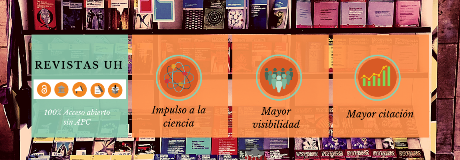How do we learn from visual references in Design? Approach from Kolb's Theory of Experiential Learning
##plugins.themes.bootstrap3.article.main##
Abstract
The search for external visual stimuli as a source of inspiration during the design process is a recurrent activity among designers of different specialties and it’s considered a crucial step in the solution of design problems. The process of analyzing visual references involves the processing of information that brings knowledge to the designer and constitute a learning process. However, little research has been done on the relationship between the process of selection and analysis of visual references and the learning process. In this study the characteristics of learning theory are presenting as a way to describe how design knowledge is transferred from the visual references to the solution of design problems. This article presents the state of the art in relation to the studies that aims to characterize the process of analysis of visual references in the discipline of Design and evaluates the potential analogy between the process of analysis of visual references and the Learning Cycle of Kolb's Theory. Proposals are presenting for futures lines of research in this area of study with repercussions in the education of design, professional practice and the theory of the discipline. In addition, arguments are established to define the role of visual references in the learning of design knowledge and during the inspiration process of designers.
##plugins.themes.bootstrap3.article.details##

This work is licensed under a Creative Commons Attribution-NonCommercial-ShareAlike 4.0 International License.
- Attribution — You must give appropriate credit , provide a link to the license, and indicate if changes were made . You may do so in any reasonable manner, but not in any way that suggests the licensor endorses you or your use.
- NonCommercial — You may not use the material for commercial purposes .
- No additional restrictions — You may not apply legal terms or technological measures that legally restrict others from doing anything the license permits.
- ShareAlike — If you remix, transform, or build upon the material, you must distribute your contribution under the same license as the original. NOTE: This point applies to numbers 1 to 20 of the magazine with the previous CC-BY-NC-SA 4.0 license. Does not apply to the new CC BY-NC 4.0 license from Volume 11, Number. 21 (2024).
References
ALEXANDER, C. (1964). Notes on the Synthesis of Form. Cambridge, MA: Harvard University Press.
CASAKIN, H., GOLDSCHMIDT, G. (1999). “Expertise
and the use of visual analogy: Implications for design educa- tion”. Design Studies 20: 153-175.
CASAKIN, H. (2004). “Visual analogy as a cognitive stra- tegy in the design process: Expert versus novice performance”. Journal of Design 4: 2.
CASAKIN, H. (2010). “Visual analogy, visual displays, and the nature of design problems: the effect of expertise”. Environ- mental Planning and Design: Design B. 37: 170-188.
CASAKIN, H., KREITLER, S. (2014). “El significado de los referentes en la enseñanza del diseño”. Actas de Diseño No. 16, Buenos Aires, Argentina.
CROSS, N. (1985). “Styles of learning, designing and compu- ting”. Design Studies Volume 6, Issue 3, (157-162)
DEFAZIO, J. (2008). Designing with precedent: A cross- disciplinary inquiry into the design process. Universidad de Indiana. UMI Microform, Estados Unidos.
DUBBERLY, H., EVENSON, S. Y ROBINSON, R.
(2008). The Analysis-Synthesis Bridge Model. Interactions Volume XV.2
EILOUTI, B. H. (2009). “Design knowledge recycling using precedentbased analysis and synthesis models”. Design Stu- dies 30: 340-368
GOLDSCHMIDT, G. (1998). “Creative architectural design: reference versus precedence”. Journal of Architectural and Planning Research 15(3): 258-270.
GOLDSCHMIDT, G. (2011). “Inspiring design ideas with texts”. Design Studies 32: 139-155.
GOLDSCHMIDT, G. (2014). “Linkography, unfolding the de- sign process”. Cambridge, Massachusetts. The MIT Press.
GONÇALVES, M. (2016) “Decoding designers’inspiration process”. (Tesis de grado). Universidad Técnica de Delft, Holanda.
GONÇALVES, M., CARDOSO, C. Y BADKE-SCHAUB,
P. (2016). “Inspiration choices that matter: the selection of external stimuli during ideation”. Des. Sci., vol. 2. DOI: 10.1017/dsj.2016.10
HERTZBERGER, H. (2005). Lessons for students in Architec- ture. 010 Publishers. Rotterdam. ISBN: 90-6450-562-4.
KOLB, D. (1984). Experiential Learning: Experience as the source of learning and development. Prentice Hall. New Jer- sey, Estados Unidos.
KOLB, D. Y KOLB, A. (2013). The Kolb Learning Style Inven- tory 4.0 A comprehensive guide to the theory, psychometrics, research on validity and educational applications. Experien- ce Based Learning Systems.
KOLB, D. Y PETERSON, K. (2017). How you learn is how you live: Using nine ways of learning to transform your life. Berrett Koehler.
LAWSON, B. (2004). “Schemata, Gambits and Prece- dent: Some Factors in Design Expertise”. Design Studies 25(5):443-457. DOI: 10.1016/j.destud.2004.05.001
LAXTON, M. (1969). Design education in practice. Atti- tudes in Design Education. K. Baynes. London, Lund Humphries.
MALAGA, R. A. (2000). “The effect of stimulus modes and associative distance in individual creativity support systems”. Decision Support Systems 29: 125-141.
MORAES, K. (2003). Use and Adaptation of Precedents in Architectural Design: Toward an Evolutionary Design Model. Delft: Delft University Press, Holanda.
OWEN, C. (1998).“Design research: Building the knowledge base”. Design Studies 19(1):9-20. DOI: 10.1016/S0142- 694X (97)00030-6
PASMAN, G. (2003). “Designing with Precedents”. Di- sertación doctoral. Delft University of Technology. DUP, Deft, Holanda.
SIMON, H. A. (1969). The sciences of the artificial. Cam- bridge, MA: MIT Press.






















